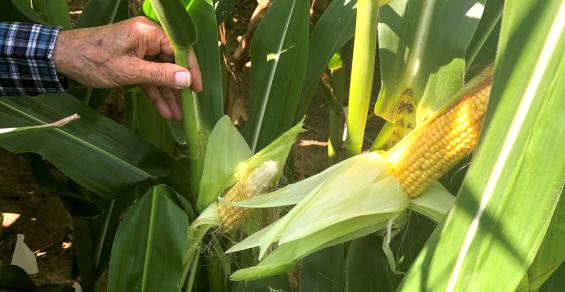Yields suffer when plants don’t have enough water to meet demands.
Corn is fairly tolerant to heat and drought conditions during early vegetative growth. However, if the heat and drought persist and severe plant stress occurs, photosynthetic capacity and yield can be lost. That happened in some areas in Indiana in 2022.
Where heat and drought stress can become a significant problem and impact yield the greatest is during pollination and silking. However, hot and dry weather experienced in June and July in Indiana in 2022 likely limited overall plant biomass by reducing photosynthetic capacity. Many farmers commented that corn was shorter in stature this year.
Plus, heat and drought hindered the corn plant’s ability to adequately support kernel development, leading to kernel abortion. Conditions reduced both ear size and kernel number in some cases. Ears in many fields were shorter than ears of the same hybrids in other years.
As corn approaches maximum height and pollination, the risk of yield loss due to heat and drought stress is the greatest. Corn water use increases from emergence to about the V15 growth stage. It peaks through silking and pollination and stays high through the R2 blister stage before decreasing.
Corn needs about 0.33 inch of water per day during peak demand, and temperature, humidity level and cloud cover can impact the total amount of daily water loss. Significant heat and water stress that occurs seven to 10 days ahead of silking and throughout pollination can result in delayed silk emergence, reduced silk elongation and silk desiccation.
Once the tassel has emerged and pollen shed has begun, a single corn plant will only shed pollen for about seven days. Therefore, delayed silk emergence can cause poor synchrony of pollen shed with silk emergence and elongation, thus reducing kernel number and yield. In addition, extreme heat stress greater than 100 degrees F can kill pollen.
However, pollen shed does not occur on a single day, and peak pollen shed typically occurs in the morning, when temperatures are lower.
One observation in 2022 is that earlier-planted corn may have reached pollination during the hot, dry weather in June and early July. Later-planted corn reached pollination later and caught more favorable conditions and precipitation during pollination. In some cases, that resulted in higher yields for later-planted corn.
Quinn is a Purdue Extension corn specialist. Read more about the impact of heat and drought on corn in 2022 in the upcoming Corn Success column on Oct. 27. Contact Quinn at [email protected].





